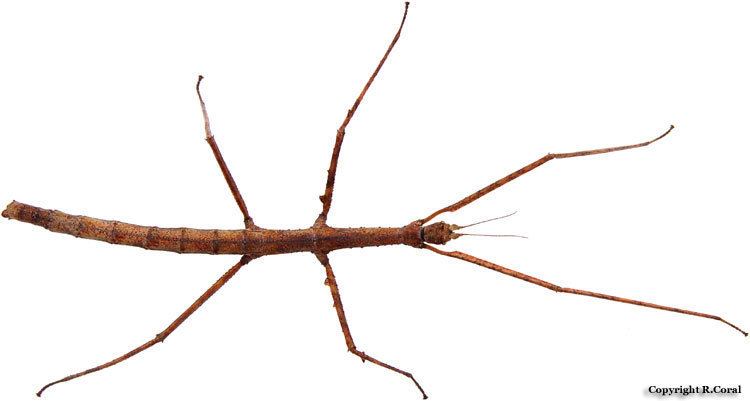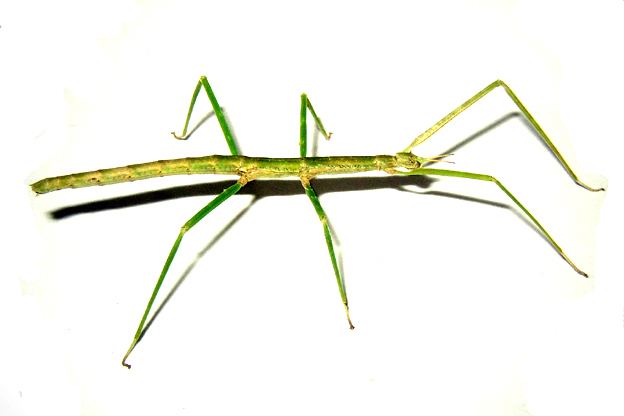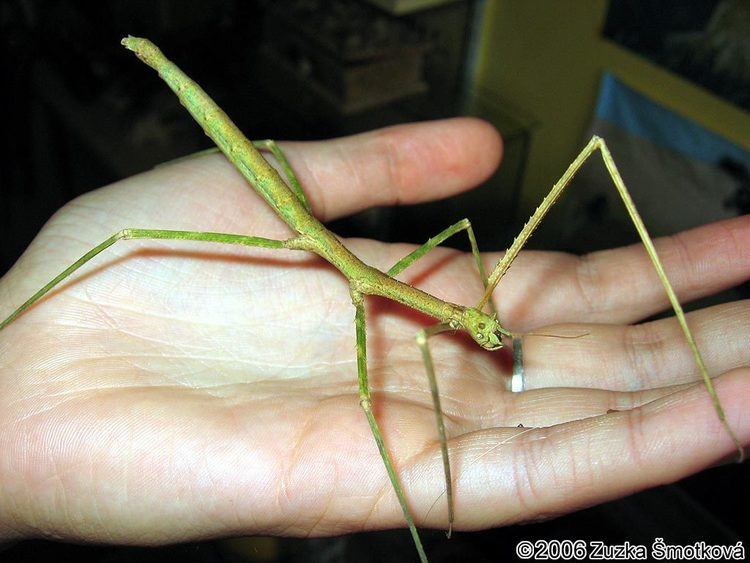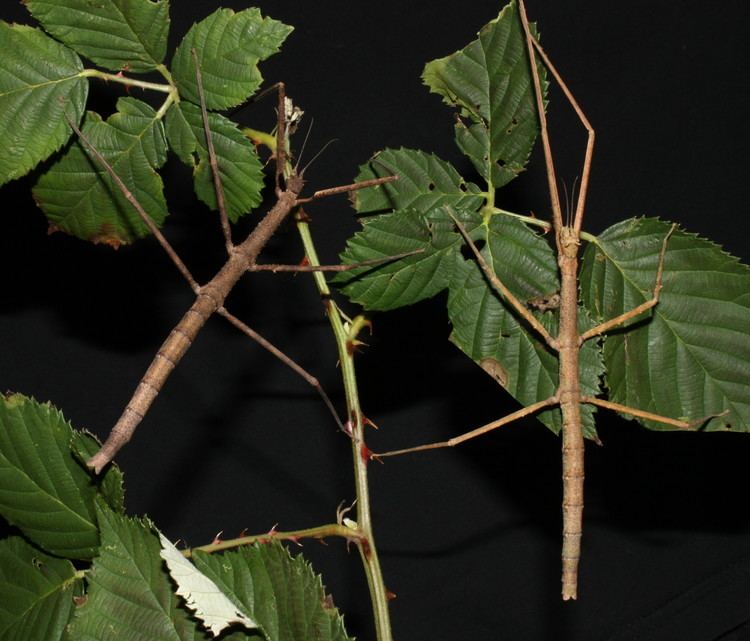Superfamily Anareolatae Scientific name Medauroidea extradentata Rank Species | Suborder Verophasmatodea Higher classification Medauroidea | |
 | ||
Similar Medauroidea, Phasmids, Insect, Carausius morosus, Ramulus artemis | ||
Medauroidea extradentata female
Medauroidea extradentata, commonly known as the Vietnamese or Annam walking stick, is a species of the family Phasmatidae. They originate in Vietnam and are commonly found in tropical forests there. They eat a variety of foliage, though in captivity they commonly eat blackberry bramble, hawthorn, oak, red maple and rose.
Contents
- Medauroidea extradentata female
- Medauroidea extradentata vietnamese stick insect
- Physical characteristics
- Reproduction
- Life cycle
- References

Medauroidea extradentata vietnamese stick insect
Physical characteristics

Vietnamese walking sticks are approximately 4-5 inches (10–12 cm) in length. Their heads are elongated and oval shaped with thread-like antennae. Their chewing mouthparts are specially adapted for eating plant material. Along its thorax are a number of small pointed bumps. Their middle set of legs show small flanges and minute spikes. These walking sticks are brownish in color and have six legs, which is a characteristic of all insects. Both male and female Vietnamese walking sticks have no wings.
Reproduction

Medauroidea extradentata is mainly parthenogenetic, meaning they are asexual, making males very rare in the species. The female drops hundreds of eggs onto the forest floor, these eggs hatch in a few months. The eggs of this species are mottled with black and white and capped with black.
Life cycle

The Vietnamese walking stick is short lived, living between 5–7 months. Nymphs look nearly identical to their parents except in size. They molt about 6 times before they become adults. At 3 months of age they become able to reproduce. Their main predators are birds and small mammals, though their camouflage helps them combat this.
